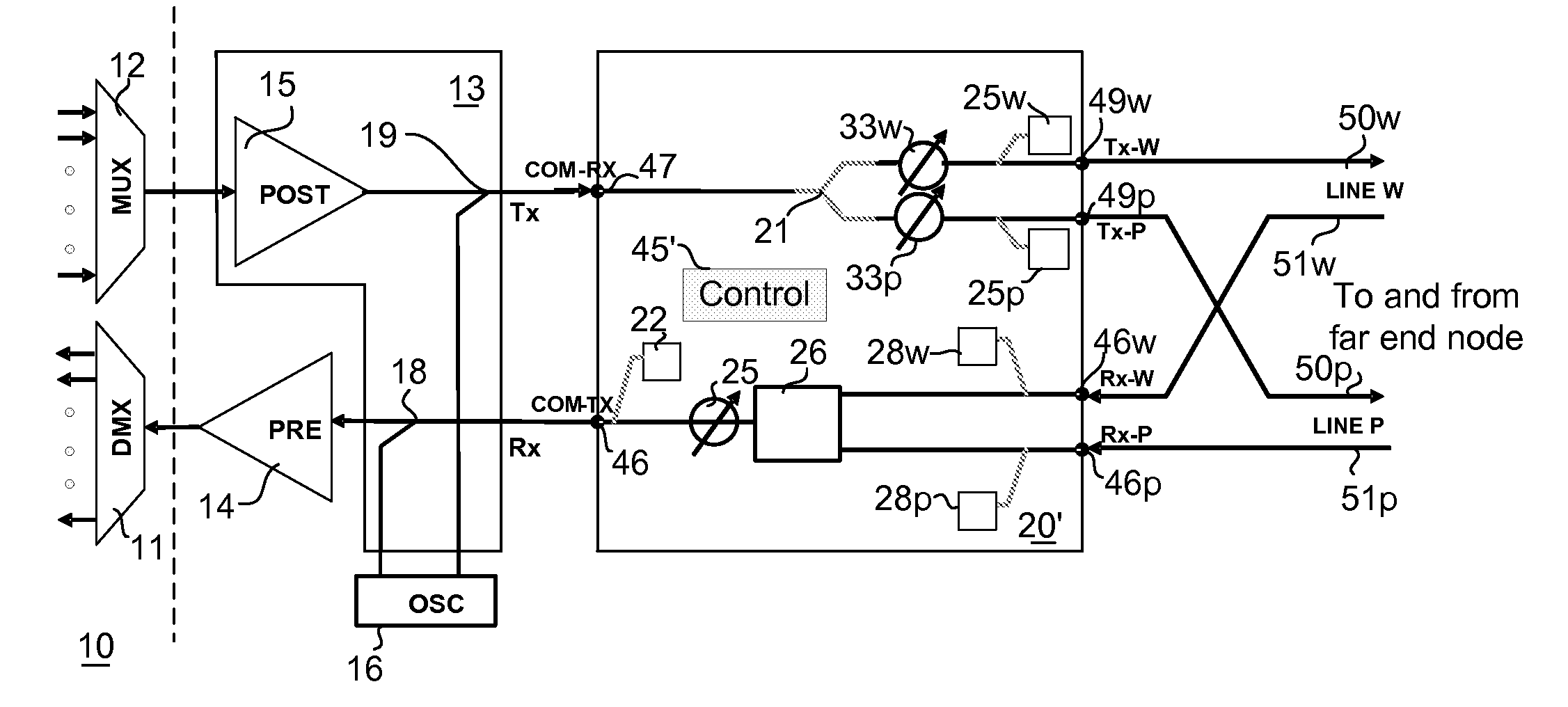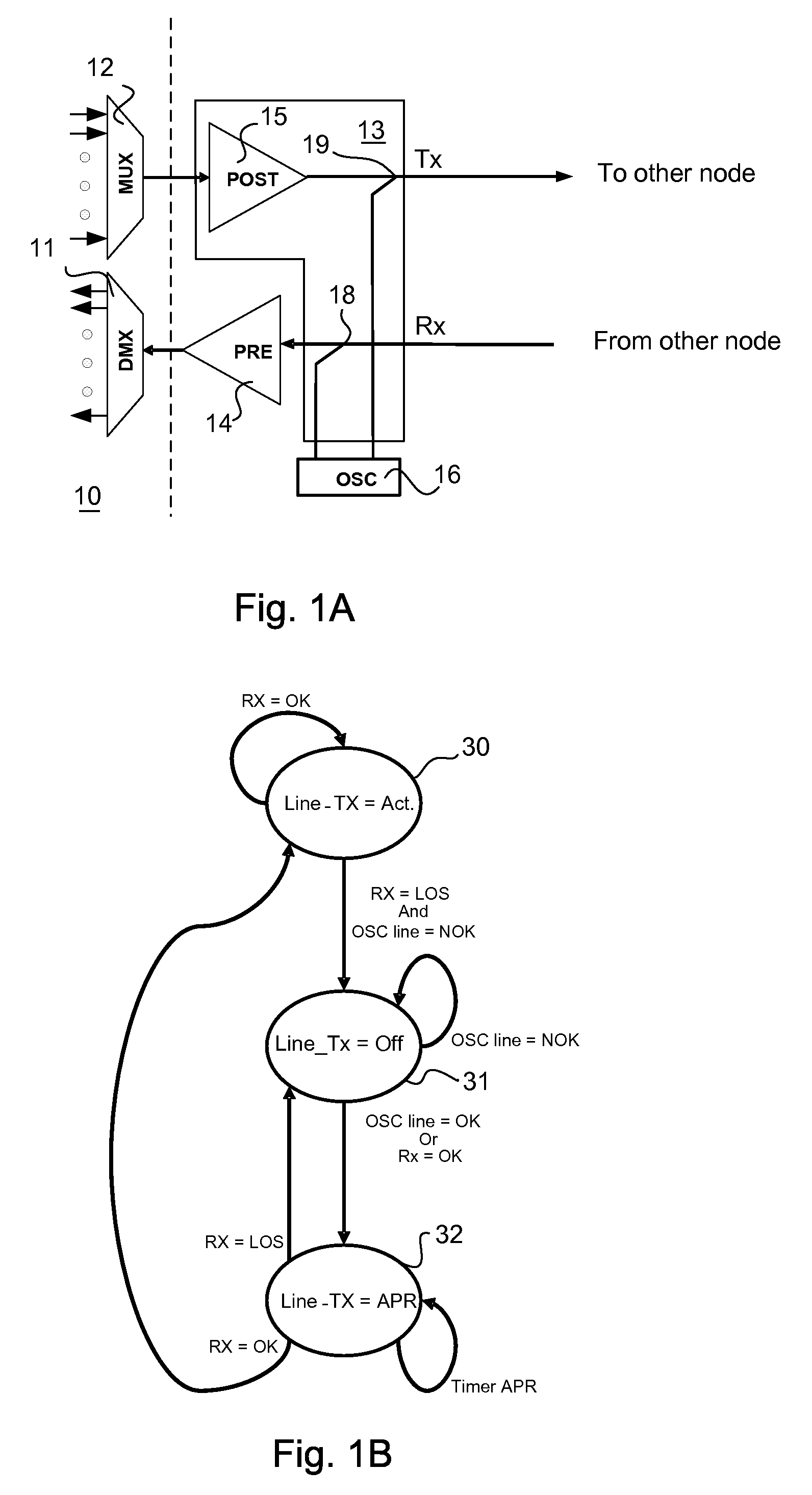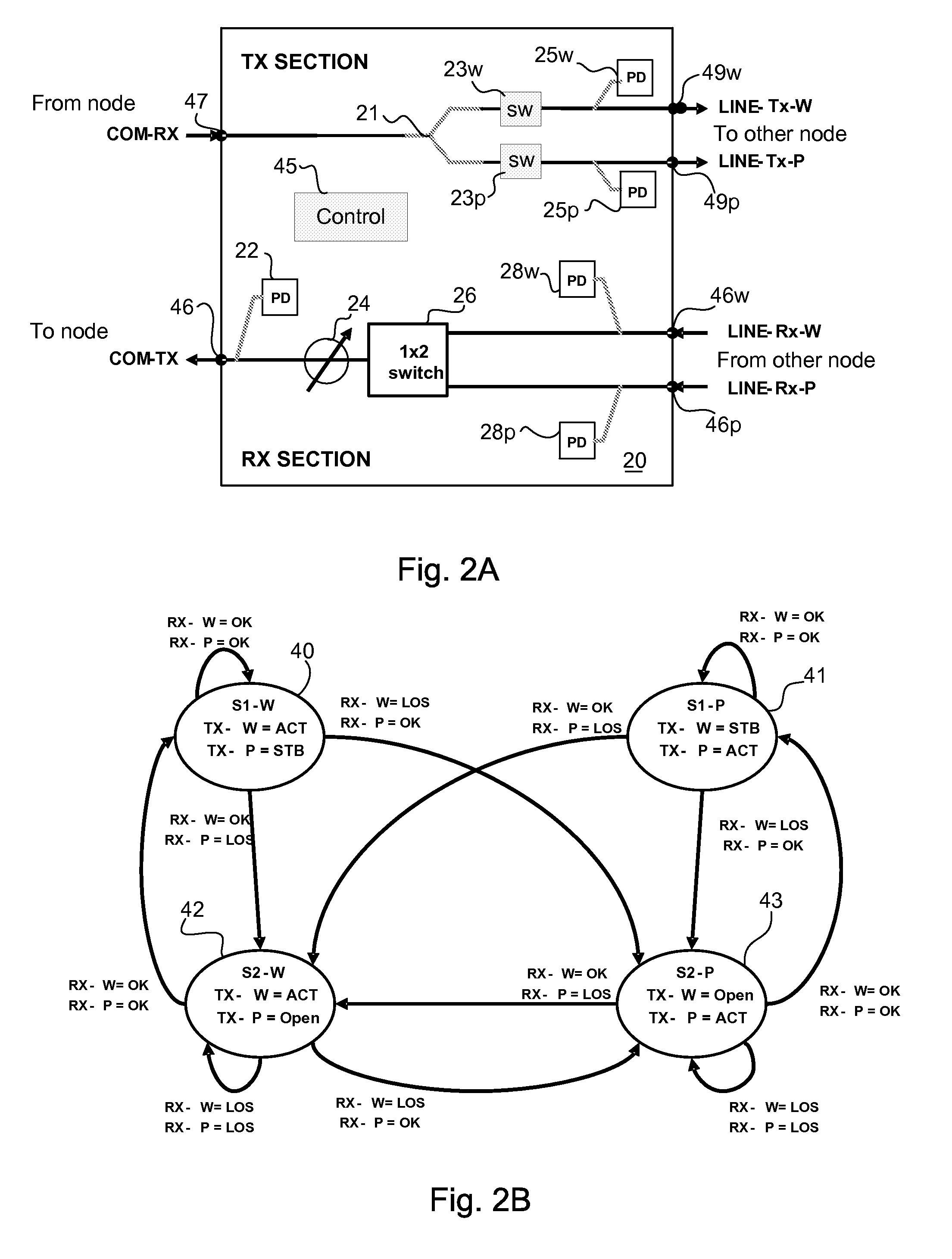Optical Safety Implementation in Protection Switching Modules
a technology of optical safety and protection switching, applied in the field of optical networks, can solve the problems of optical networks that have problems in implementing protection and safety measures, power of lasers used in optical networks is relatively low, and the effect of affecting the safety of optical networks
- Summary
- Abstract
- Description
- Claims
- Application Information
AI Technical Summary
Problems solved by technology
Method used
Image
Examples
example embodiments
DESCRIPTION OF EXAMPLE EMBODIMENTS
[0016]FIG. 1A illustrates a node 10 connected to another node (not shown) at the remote end of an exemplary two-fiber link, which forms a fiber loop between the two nodes. The node 10 is represented by a multiplexer 12 which gathers signals from various sources to transmit to the remote node by a Tx fiber and a demultiplexer 11 which separates signals received from the remote node by an Rx fiber for various destinations.
[0017]Optical signals deteriorate as they travel through optical networks and must be periodically amplified. To this end optical amplifiers are installed at different locations of an optical network to ensure that optical signals are not lost. In the exemplary and conventional arrangement of FIG. 1A, a pre-amplifier 14 boasts the strength of incoming signals received through the Rx input port over the Rx line before passing the signals to the node 10. For signals leaving the node 10, a post-amplifier 15 boasts signal strength of sig...
PUM
 Login to View More
Login to View More Abstract
Description
Claims
Application Information
 Login to View More
Login to View More - R&D
- Intellectual Property
- Life Sciences
- Materials
- Tech Scout
- Unparalleled Data Quality
- Higher Quality Content
- 60% Fewer Hallucinations
Browse by: Latest US Patents, China's latest patents, Technical Efficacy Thesaurus, Application Domain, Technology Topic, Popular Technical Reports.
© 2025 PatSnap. All rights reserved.Legal|Privacy policy|Modern Slavery Act Transparency Statement|Sitemap|About US| Contact US: help@patsnap.com



